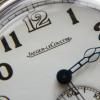B-Dip residue?
-
Recently Browsing
- No registered users viewing this page.
-
Topics
-
Posts
-
Hi Stuart. I trust you're well. Sorry to start up an old thread, but I am interest in how you did the extender for the Brenray? What did you do. Did you take a steel/alumium rod and added the appropriate threading? What's the length did you choose? What was your procedure? Got clearer pictures of it? Please kindly advise. Thank you!
-
By LazyTimegrapher · Posted
As far as my watch repairing plans go, I think I’ll buy some cheaper watches and/or watch movements to practice on. Probably the recommended ETA 6498 for the course and an SW200-1 / Invicta diver for practicing on a watch similar to the aquaracer. Given the daily rates for the aquaracer, I suspect it has a standard/base grade of the SW200-1. My long term plan is to buy a top grade SW200-1 movement from Switzerland with the better balance and hairspring and swap that movement into the aquaracer to improve the timekeeping. A movement swap for a nice mechanical probably isn't trivial though, so that’s probably a plan for down the road when the watch needs servicing or when I feel confident enough that I can do the job without destroying the watch. however, if anyone has ideas for how this watch opens I’m interested to hear them. -
By LazyTimegrapher · Posted
You’ve persuaded me that it’s not worth risking it with this watch just yet. However, I am still curious how to open it. regarding the daily rate, the +10spd is measured on my wrist. Every 24hours I wear it, it gains about 10 seconds, and it gains about 70 seconds in 7 days. So the +10spd is the average daily rate when I wear it 24hrs/day. on the time grapher the rates are all over the place. Amplitude is around 290-300 in all positions. Dial up it’s +10spd 3 down it’s +18spd 12 down it’s +5spd 6 down it’s +20spd dial down its +13spd 9 down it’s +4spd I guess this means my wearing habits are mostly dial up. Perhaps also including equal amounts of 3 down and 12 down which cancel each other out. Since everything is biased fast, I thought I could slow it down to have it get closer to 0spd on dial up with some slow and fast in the other positions. -
I'll get photos looking down later today. I actually have two AS 1187's I'm working on and both have the same problem - running too fast, low amplitude. I'll get a photo of that one as well.
-
By rossjackson01 · Posted
Yup. I now have a label on the microphone of my Timegrapher that says in big letters, 'DEMAGNETISE'.
-







Recommended Posts
Join the conversation
You can post now and register later. If you have an account, sign in now to post with your account.
Note: Your post will require moderator approval before it will be visible.